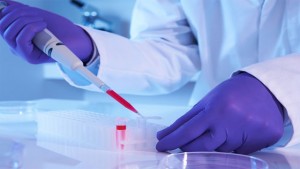 CALIFORNIA, United States, Monday June 6, 2016 – Stroke patients, who under normal circumstances would likely be paralyzed or need a wheelchair indefinitely, are now moving and walking following a breakthrough stem cell procedure.
CALIFORNIA, United States, Monday June 6, 2016 – Stroke patients, who under normal circumstances would likely be paralyzed or need a wheelchair indefinitely, are now moving and walking following a breakthrough stem cell procedure.
Against all previous odds, the treatment also worked for patients whose strokes had occurred between six months and three years before. Historically, scientists believed that the brain would be incapable of regeneration after six months.
In research that was documented in the journal Stroke, 18 patients who allowed doctors to drill a hole in their skull and inject stem cells into the damaged part of their brain have made a “remarkable” recovery.
According to Professor Gary Steinberg, Chair of Neurosurgery at Stanford University School of Medicine: “The remarkable recovery we saw in many of these chronic stroke patients was quite surprising.
“This wasn’t just ‘they couldn’t move their thumb and now they can’. Patients who were in wheelchairs are walking now. Their ability to move around has recovered visibly. That’s unprecedented,” said Steinberg, who has spent 15 years in stem cell research.
“The study changes our prior notion that patients can’t recover much more after the first six months following a stroke because the circuits are dead, or irreversibly damaged. “Clearly the circuits can be resurrected by this treatment and we are still investigating how they are being jump-started.”
Scientists had previously believed that stem cells could not integrate into the brain to become neurons. It nevertheless now appears they secrete chemicals for growth and regeneration which the brain can use to restore function.
“In a simple sense, the stem cell transplant turns the adult brain in a neonatal of infant brain which recovers well after a stroke or other injury,” Steinberg explained. “This could revolutionize our concept of what happens after not only stroke, but traumatic brain injury and even neurodegenerative disorders. We thought these brain circuits were dead and we’ve learned that they’re not.”
The Stanford University team believes the therapy could also work for other neurodegenerative conditions such as Alzheimer’s disease, Parkinson’s and Lou Gehrig’s Disease (ALS). The patients in the most recent trial had suffered ischemic strokes in which a clot prevents blood getting to the brain, leading to brain cell death.
The procedure involved drilling a small hole in the skull above the damaged area so that stem cells taken from the bone marrow of two donors could be injected at several spots around the edge of the injury.
The trial participants, who had an average age of 61, were given a local anaesthetic and went home the following day. While many complained of initial headaches because of the surgical procedure, there were no long-term side-effects.
The patients were subsequently monitored with blood tests, clinical evaluations and brain imaging. It was found that the implanted stem cells did not survive very long, but recovery continued even after they had gone.
There have been no relapses since the injections, which were carried out up to two years ago. Researchers at Stanford are now moving to a phase-2 trial to see if the results can be replicated.
The scientists are also starting a trial with the same cells transplanted into the brains of patients with chronic traumatic brain injury and neurologic deficits. Stem cells are thought to be the future of medicine because they can transform into any cell in the body depending on where they are placed.
